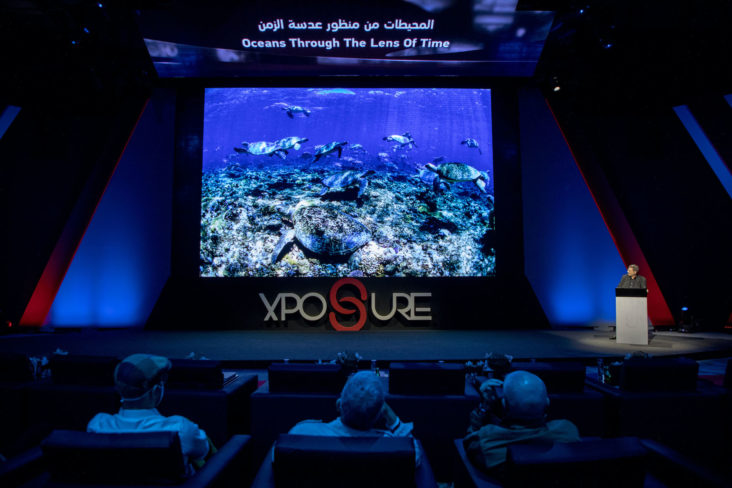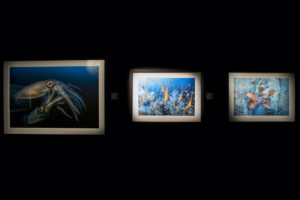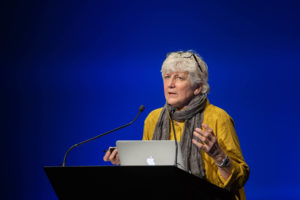Life Partners David Doubilet And Jennifer Hayes Share Glimpses Of Life Below The Sea At Xposure 2022 Conservation Summit

“Every click of the shutter is a collaboration,” remarked David Doubilet, pioneering underwater photographer, at a seminar titled ‘Oceans through the Lens of Time’, held as part of the Conservation Summit at Xposure International Photography Festival.
Doubilet, who has worked on 78 stories for National Geographic in over 40 years in the profession, was introduced to the Summit audience by his former colleague and interviewer, Kathy Moran, as “The Old Man of the Sea”.
“A healthy reef system has a healthy population of sharks,” stressed Doubilet as he presented pictures of of the Great Barrier Reef in Australia – a 15-mile-long natural wonder. His images depicted the degradation of reefs over the years and highlighted its uncertain future despite the best of conservation efforts.
Another pet interest of the photographer is green turtles or “ancient mariners” as he calls them – due to the distances they cover to nest, swimming from Indonesia and Philippines to Raine island in the Great Barrier Reef. Doubilet recollected the joy of swimming under clouds of turtles as he photographed and studied their lives.
The photographer also shared images of sting rays and jellyfish taken in The Philippines, American crocodiles in Cuba, and penguins playing on an iceberg in Devon Island, Canada. “The most surreal of animals are the metre-long garden eels, which perform the most amazing dance but sink back into the sand when you approach them – almost as if they have never existed!” he said.
“The greatest story on earth is earth itself, and as for the sea, we must preserve it because as the oceans go, so do we,” he reminded in conclusion.
Fascinating encounters under the sea
At the session titled ‘Below the Looking Glass’, aquatic biologist and underwater photographer Jennifer Hayes led the Conservation Summit audience into a fascinating journey of her encounters with marine animals, particularly sturgeons and seals which have occupied a good part of her research studies.
Called the dinosaur fish, sturgeons have no teeth or bones, explained Hayes, adding that they do not spawn until 25 years – after which they spawn every five years. She shared an image of a boy releasing baby sturgeons into the water, describing it as “a picture of the next generations of two species getting to know each other.”
The photographer revealed how her fascination for harp seals led her to spend time with them in the Gulf of St. Lawrence near Canada as she described her close encounters with these creatures. “A mother harp seal once came to my aid to battle off an attacking male harp seal – an encounter that is engraved on my being,” she said, adding that seals nurse their pups for only 12-15 days, after which they are abandoned.
Jennifer Hayes also shared images of penguins in South Georgia, including that of a penguin with its chick and another of a seal and a penguin “talking to each other”.





